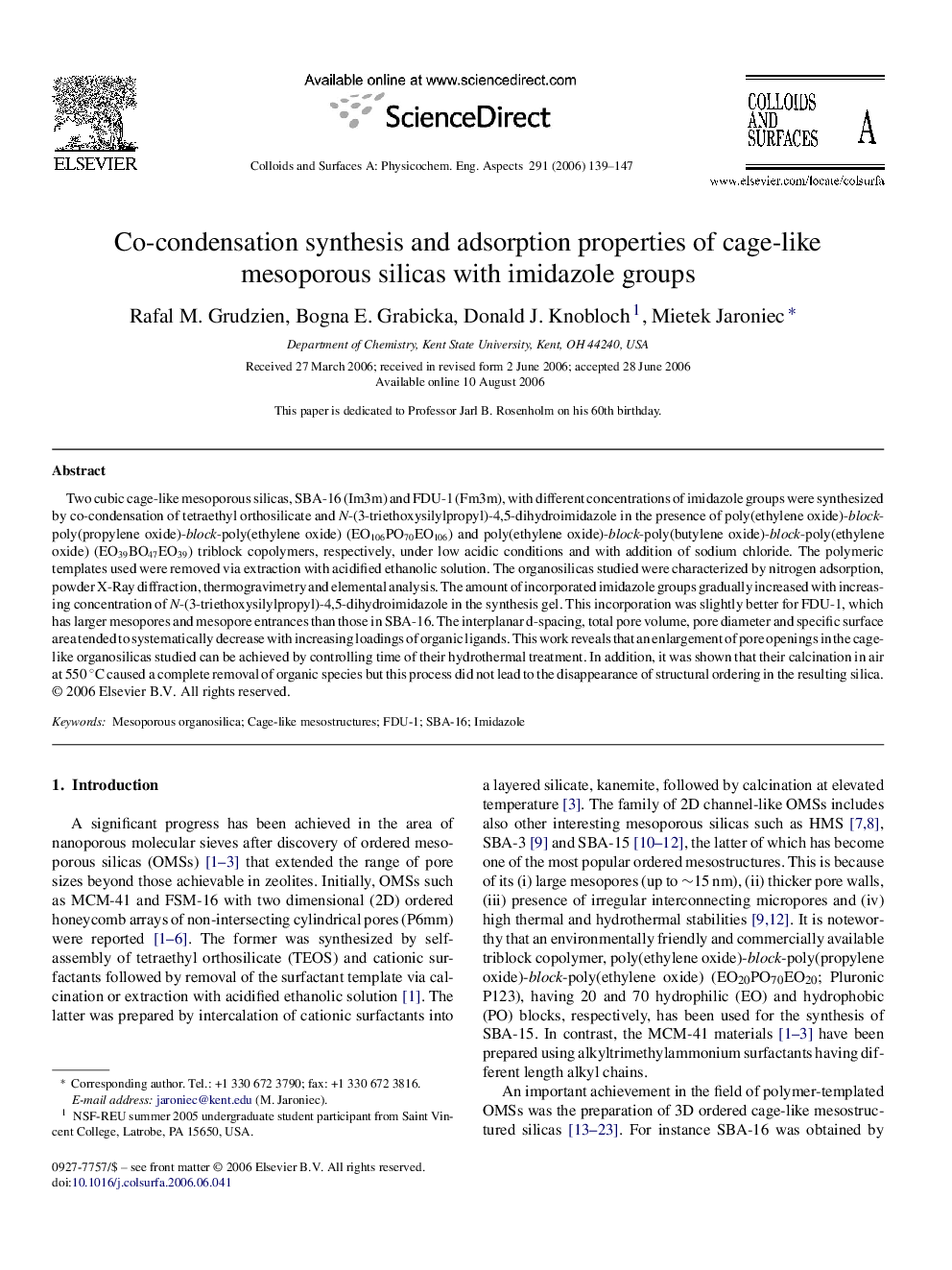| کد مقاله | کد نشریه | سال انتشار | مقاله انگلیسی | نسخه تمام متن |
|---|---|---|---|---|
| 597923 | 1454081 | 2006 | 9 صفحه PDF | دانلود رایگان |

Two cubic cage-like mesoporous silicas, SBA-16 (Im3m) and FDU-1 (Fm3m), with different concentrations of imidazole groups were synthesized by co-condensation of tetraethyl orthosilicate and N-(3-triethoxysilylpropyl)-4,5-dihydroimidazole in the presence of poly(ethylene oxide)-block-poly(propylene oxide)-block-poly(ethylene oxide) (EO106PO70EO106) and poly(ethylene oxide)-block-poly(butylene oxide)-block-poly(ethylene oxide) (EO39BO47EO39) triblock copolymers, respectively, under low acidic conditions and with addition of sodium chloride. The polymeric templates used were removed via extraction with acidified ethanolic solution. The organosilicas studied were characterized by nitrogen adsorption, powder X-Ray diffraction, thermogravimetry and elemental analysis. The amount of incorporated imidazole groups gradually increased with increasing concentration of N-(3-triethoxysilylpropyl)-4,5-dihydroimidazole in the synthesis gel. This incorporation was slightly better for FDU-1, which has larger mesopores and mesopore entrances than those in SBA-16. The interplanar d-spacing, total pore volume, pore diameter and specific surface area tended to systematically decrease with increasing loadings of organic ligands. This work reveals that an enlargement of pore openings in the cage-like organosilicas studied can be achieved by controlling time of their hydrothermal treatment. In addition, it was shown that their calcination in air at 550 °C caused a complete removal of organic species but this process did not lead to the disappearance of structural ordering in the resulting silica.
Journal: Colloids and Surfaces A: Physicochemical and Engineering Aspects - Volume 291, Issues 1–3, 15 December 2006, Pages 139–147